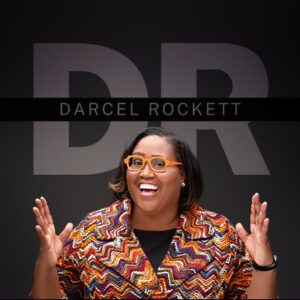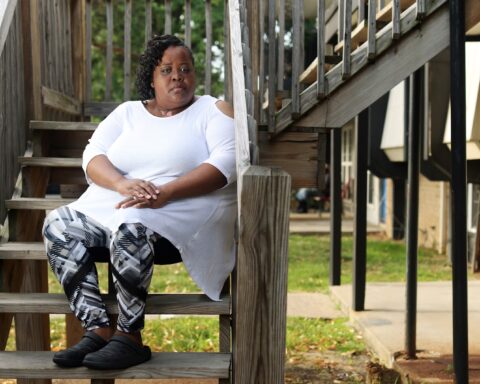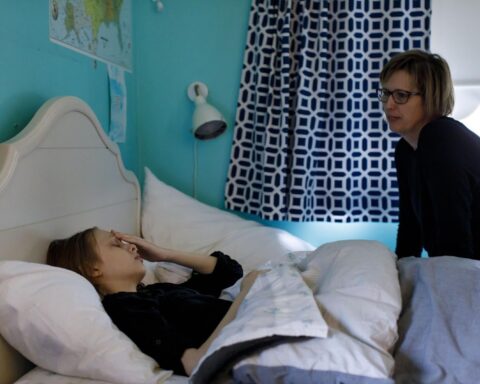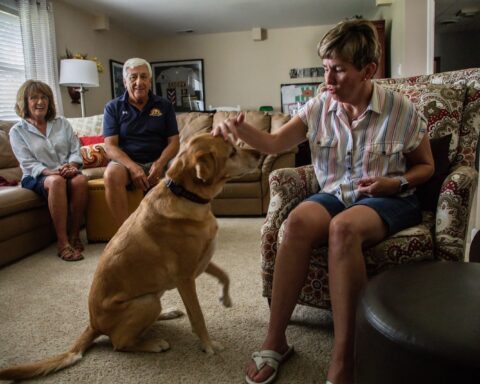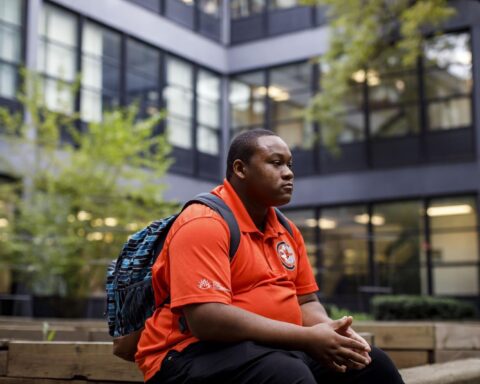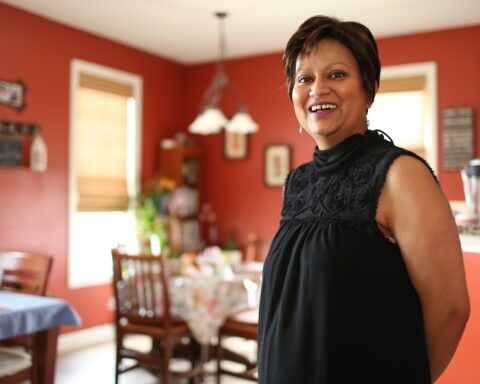South Holland resident Ledgure Herron Jr. got out of COVID-19 quarantine Wednesday. The 51-year-old pastor said he was admitted to University of Chicago Medicine Ingalls Memorial Hospital in Harvey the first week in April. He remembers having a cough, but no fever. He remembers getting oxygen and he uses terms like “terrible” and “overwhelming to the mind” when referring to his illness.
“While I was ill, I had to stop watching breaking news because it was about to break me,” Herron said. “All we see are the numbers going up. We’re not seeing people who made it. People need to know that people are surviving it. They made it, and I can make it.”
Nicole-Chelsey Howard, 38, of Chicago, likened enduring COVID-19 to “having a 24-hour, seven-day-a-week asthma attack.”
“Some points of the day, I just cried,” said the 15-year medical assistant who tested positive in March. “I’ve never felt that much pain. I have sleep apnea, but I couldn’t sleep with my machine because I felt my breathing was already restricted and putting this mask on my face was making it worse. So I barely slept. It was definitely an experience that I hope I don’t have to deal with again.”
Howard and Herron shared their coronavirus experiences with family members and friends in hopes that the more others know about people living with the virus, the less fear will surround the condition. With Gov. J.B. Pritzker extending Illinois’ order through May, fear and anxiety around COVID-19 continue to mount as many questions remain on curbing the spread, antibodies and addressing health disparities. But with such uncertainty, is stigma growing as we’re in the throes of our coping with this new illness?
Celeste Watkins-Hayes, a professor of sociology and African American studies at Northwestern University, said just as people with preexisting conditions are more likely to have negative outcomes with COVID-19, people experiencing preexisting stigmas are more likely to be deeply stigmatized in the age of COVID-19.
“A lot of the dialogue that I heard when the numbers were first coming out — that black and brown people were being disproportionately affected by this in terms of deaths from COVID-19 — there was a lot of blame of black people, particularly about black people not sheltering in place, not respecting social distancing, they’re not doing what they’re supposed to do,” said Dr. Kerri Lockhart, a pediatrician at Rush University Medical Center, who has rebounded from her bout with coronavirus. “There are some people who are victim blaming. That narrative is dangerous for a lot of reasons, but for patients, if they internalize that and they feel responsible that they got COVID-19 through some fault of their own, then that’s when you start that cloud of people feeling shameful about it. And that can snowball into a place of stigma.”
According to Watkins-Hayes, author of “Remaking a Life: How Women With HIV/AIDs Confront Inequality,” people may find themselves stigmatized on the basis of COVID-19 and statuses like race or class. She said that given the widespread impact of the highly contagious coronavirus, one would think that the stigma would be minimized, but assumptions about groups are influencing beliefs about the disease.
“Part of the concern with COVID is this notion of who is ‘contaminated’ — that’s kind of the underlying assumption as we think about spread,” she said. “We wrongly thought about people living with HIV as ‘contaminated’; and racist ideas generate false beliefs that certain social groups are ‘contaminated’ as we look at rhetoric directed towards African Americans, Latinxs and Asians. The ways in which we assign assumptions of purity on the basis of race, class, gender and sexuality, when you bring COVID into it, it increases the likelihood that ‘contaminated,’ ‘impurity’ and ‘dangerous’ gets tracked along the lines and fissures that we already have in society.”
To get ahead of coronavirus becoming stigmatized, Watkins-Hayes recommends that people tell their stories of testing positive for COVID-19 and getting through it.
“It’s really easy to stigmatize when you have an abstract notion of the people most affected and you’re allowed to fill in the blanks of who you think they are and what their motivations might be,” she said. “To the degree that we can hear the stories from people who are grappling with this and we can see their humanity, their challenges and resilience … that’s very humanizing, and that’s a way to fight stigma. And when we see groups that are disproportionately impacted, we must understand how historical and contemporary inequities are driving the numbers that we see.”
Watkins-Hayes said other ideas to stave off coronavirus stigma include: storytellers linking their experiences with a call to action; and making sure infrastructure is accessible to everyone. Environment and institutions that don’t act like islands can decrease the disparity gap, Watkins-Hayes added. So can getting more information into the communities, Lockhart said.
Shelly Fuerte, of Andersonville, agreed. Still quarantined after testing positive, the tour manager said the way she’s been getting through her illness with her husband (who also tested positive for COVID-19) is via the internet and people sharing their stories.
“It’s where we have gleaned any hope or understanding,” she said. “People need to know the middle ground and how to deal with it. We’re still not sure how to come out of this.”
AIDS Foundation of Chicago will be hosting a Virtual Advocacy Day April 29, so advocates, community members, and local and state representatives can not only communicate clear needs, but also make direct asks for responsive action for communities of color and all people living with, and vulnerable to, HIV, both during and beyond the coronavirus pandemic.
“I think the collective power has to come from advocacy — definitely through physicians and public health professionals and lawmakers and policymakers — where we are making concerted efforts to come together,” Lockhart said.
Aisha Davis, AIDS Foundation of Chicago’s director of policy, agrees.
“With coronavirus, we’re seeing everyone being hit: white people, black people, Asian people, Latinx people,” she said. “The fact that everyone is getting hit means that it’s easier to appeal to the empathy of folks who are in power who sometimes have an easier way of distancing themselves from certain conversations. I don’t think that we’ll be able to avoid stigma completely … but I do think we have a unique opportunity to try to flatten the curve of stigma as well as the curve of COVID-19 if we remember to discuss this as something that is not unique to any community, that is not indicative of a flaw in morality or ethics or responsibility.”
Until then, coronavirus stories will continue to come out in hopes that stigma will be minimized, said Herron.
“I told my friends this is not a scene from ‘The Color Purple’ when the old man said: ‘I hear she’s got the nasty women’s disease,’” he said. “This ain’t nothing that you did. It’s attacking the rich, the poor, the blacks, the whites, the homeless, the educated. It is nondiscriminatory.”
“In the midst of COVID, I know there’s a lot of anxiety,” Lockhart said. “My hope is we get more information into the communities, so there is what I hope is a little less fear and people can move through this pandemic with knowledge and feeling safe, using evidence-based practices to keep themselves and their families healthy.”

